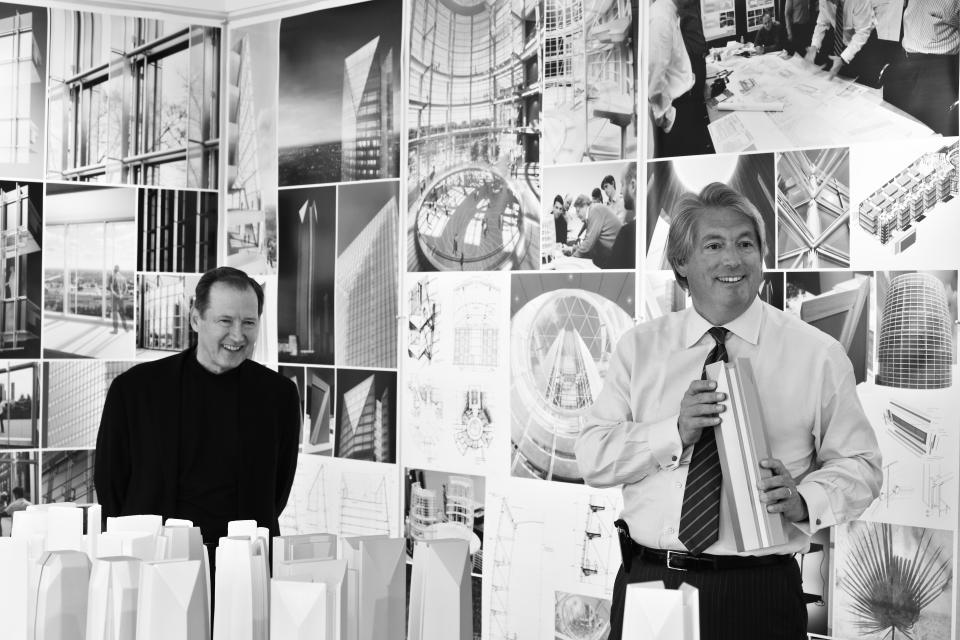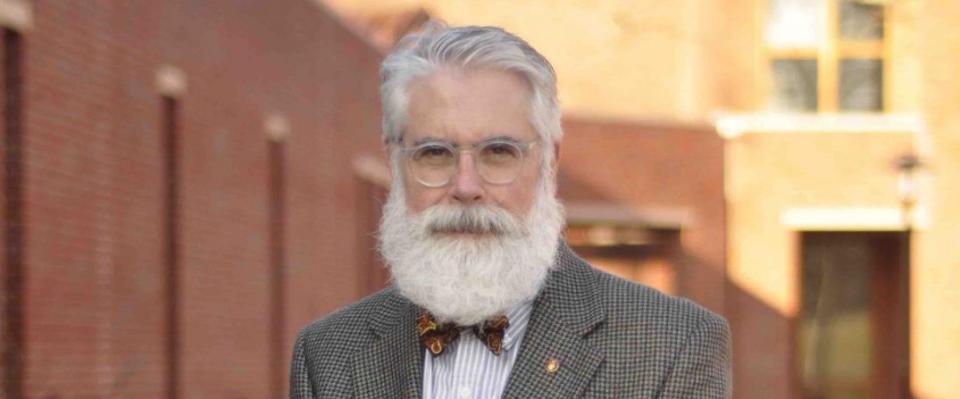The Art of Collaboration
The Art of Collaboration, authored by Michael J. Crosbie, Ph.D., FAIA presents the foundational tenets of Pickard Chilton that underpin our unique practice model to share with the public, architecture students, and the profession. In the following article published in Common Edge on August 12, 2021, Crosbie explains the origins of the book, the seven themes which frame the narrative, and the successful projects that have been realized as the result of these collaborative relationships.
A Model of Collaborative Practice
The success of the creation of a contemporary work of architecture depends upon something typically not discussed in design education, rarely considered in criticism or theory, and frequently missing in most writing about the profession and its legacy: human relationships. The reality is that architecture, for better or worse, is the result of interactions that transpire between scores of people involved in bringing a design from embryonic state to execution in three dimensions, to live in the fourth dimension: time. With complex projects, thousands of people might be involved: clients, architects, consultants, and project teams gathered around a shared goal of realizing a new work of architecture.
The strongest of these human relationships is usually between architects and clients. Ideally, the architecture they create together should rest on a foundation of collaboration. Such partnerships blossom or wither based on the dozens of professional interactions over the life of the project. In a new book, I explore how the New Haven, Connecticut–based firm Pickard Chilton has, over more than two decades of practice (one might describe it as “responsive practice”), honed relationships between clients and architects—and other project team members—cultivated through seven elements of collaboration.
The process of defining these elements of collaboration between the architects and their clients is a deliberative one. Once defined and expressed, these elements need to be refined, fostered, nurtured, and protected during the working relationship, sometimes over many years. In such collaborative relationships, the architects and the clients might appear like gardeners working together over the same patch of earth. Their collaboration enriches the work, and also helps their relationship to thrive. Beyond trust and understanding, these architects have found that such collaborative relationships help them to create an architecture that is not only well suited to the clients’ functional needs and aspirations for one project, but it sustains ongoing collaborations across many years and many projects.

Defining the Narrative
The book, Pickard Chilton: The Art of Collaboration, seeks to redress the dearth of attention paid to understanding architecture as a collaborative art between clients and architects. This is a value that permeates this particular practice, and one that is shared by the clients these architects work with. The documentation of these relationships is offered to other architectural practitioners and prospective clients as a model of the art of collaboration and the benefits that flow from it. The approach to the design process of individual projects, some of which are documented in the book, is generated through a nuanced understanding and appreciation of the client’s worldview and values, ideally reflected in the finished architecture. The focus on architecture as the art of collaboration with clients is a sustaining portal through which the architects understand who they are working with, which serves to validate the architectural solution. This art of collaboration helps the resulting design to reflect values articulated by the clients. The architecture is documented and discussed within the context of the art of collaboration that distinguishes this firm’s approach. Each of the chapters explores one of the seven collaborative elements, how they’re understood by clients and architects alike, and their expression through architectural design:
Listening: Both clients and architects listen, but architects strive to be active listeners. They know when to stay quiet in conversation with clients. Architects are not wary of silences in exchanges with a client.
Rapport: This allows for the easy and comfortable exchange of information and ideas between clients and architects. Rapport is key in communication, and it’s part of trust. It is also the opportunity for candid, sometimes difficult conversations.
Learning: Architects always learn from clients. The experience of creating architecture together presents designers with multiple opportunities to learn, to challenge their own and the client’s assumptions, to arrive at new understandings.
Consensus Building: Every project potentially results from a give and take of ideas. Ultimately, the architecture reflects the ideas of both parties, with ideas sometimes entwined in ways that make the result greater than their sum. The product is consensus—the outcome of collaboration.
Representation: This is an essential element for exploring design ideas. A wide range of representation techniques are used by architects, clients, consultants, and others to communicate on many different levels over the life of a project and the course of collaboration.
Mutual Trust: Clients and architects strive to understand each other’s values—even if they’re not necessarily shared—as a way to build mutual trust, the foundation upon which relationships and projects are built.
Time and Place: Ultimately, these architects, working through the process with client-collaborators, seek to create architecture that is the right solution for its time and its place. This continues the tradition of architects such as Eero Saarinen, Kevin Roche, and Cesar Pelli, champions of this approach who are part of the firm’s lineage and have been influential on its collaborative approach.
Unlike most explorations of architectural approaches, this one places emphasis on capturing the client’s worldview, their voice. As such, the goal is to present the art of collaboration in the voice of the client: how each element helps inform and shape an architecture just right for them. It’s an approach that I believe should resonate with many practicing architects.
https://commonedge.org/a-model-of-collaborative-practice/
About the Author
Michael J. Crosbie, Ph.D., FAIA, has made significant contributions in the fields of architectural journalism, research, teaching, and practice. He has served as an editor at Architecture: The AIA Journal; Progressive Architecture; ArchitectureWeek.com; and is editor-in-chief of Faith & Form, a quarterly journal on religious art and architecture. He is also a frequent contributor to Architectural Record and writes about architecture and design for the Hartford Courant.
He has also appeared as an architectural expert on The History Channel. He is the author of more than 20 books on architecture (including five books for children) and has edited and contributed to more than 20 others. Dr. Crosbie is Professor of Architecture at the University of Hartford’s College of Engineering, Technology, and Architecture, and former Chair of the Department of Architecture and Associate Dean. He has also served as an adjunct professor at Roger Williams University and Catholic University. He has lectured and served as a visiting critic at architecture schools in North America and abroad, including the University of California (Berkeley); the University of Pennsylvania; Yale University; and the Moscow Architectural Institute.
Dr. Crosbie is a registered architect in the State of Connecticut. He has practiced with Centerbrook Architects & Planners and Steven Winter Associates, and is a member of the College of Fellows of the American Institute of Architects.


